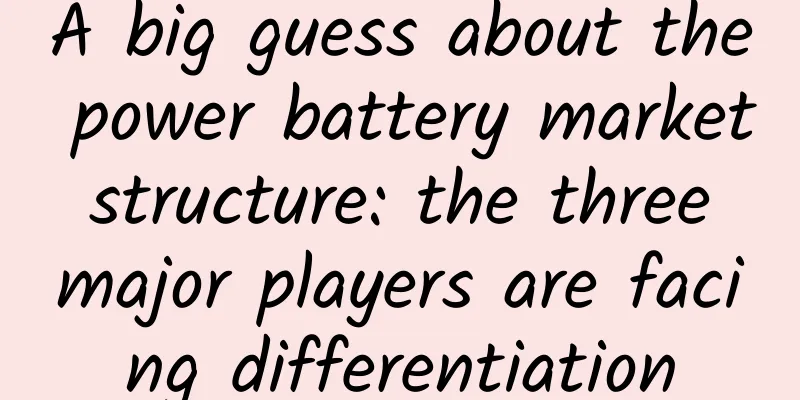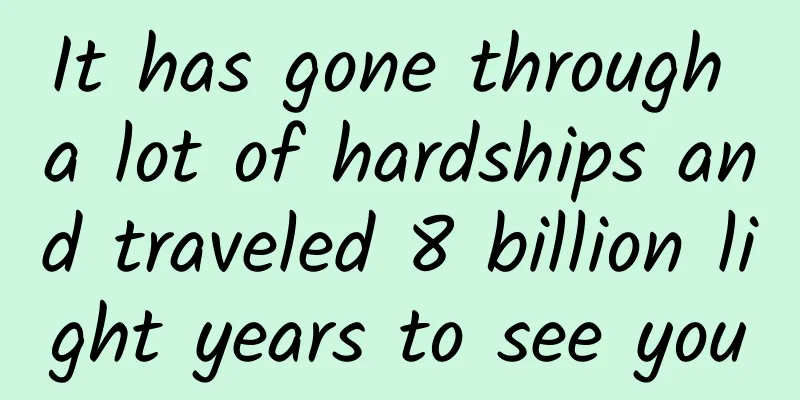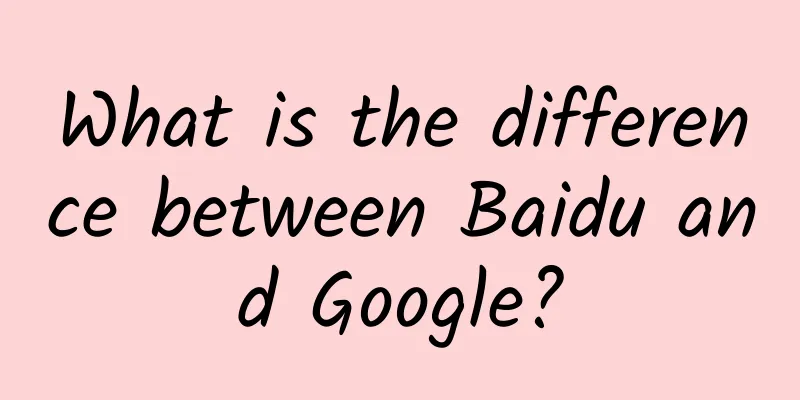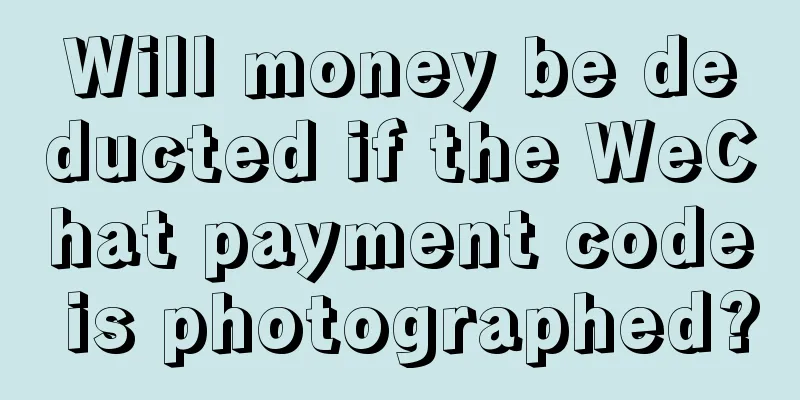A big guess about the power battery market structure: the three major players are facing differentiation

|
Considering the current market situation of the power battery industry and the timing of CATL's announcement of its listing guidance, we believe that the power battery market has reached the mid-game. So, what kind of changes does the current market situation reveal about the future? 1. Say goodbye to "small and scattered" At present, the main problems facing China's lithium battery industry are low concentration and lack of technological accumulation and innovation, which have led to serious resource dispersion and disorderly market competition. This has made China's lithium battery industry always large but not strong, unable to optimize resource allocation, unable to form a standardized and orderly market structure, and unable to form a joint force when competing with the outside world. CATL has initiated the listing process, and mainstream battery manufacturers have been expanding their production capacity, which will further increase the brand concentration in the power battery market. Data shows that the combined market share of the top five power battery companies, including BYD, CATL, Watma, Guoxuan High-tech, and Tianjin Lishen, has reached nearly 70%. In addition, the industry believes that the road to cost reduction for power battery companies is not a short-term process of one or two years, but a long-term process. Because of the gradual decline of new energy vehicles, the country has made it clear that subsidies will be cancelled by 2020. Due to the decline in subsidies for new energy vehicles and the increase in prices of upstream raw materials, power battery companies are under pressure from both ends. Large companies can scale up production to reduce costs, but the survival of some small manufacturers will become difficult. The "small, scattered and chaotic" power battery companies that have blossomed everywhere before will be eliminated in the market competition. 2. Facing the impact from car companies Entering the second half, as international mainstream automakers such as Volkswagen and BMW have joined the ranks of building their own battery factories, the "disruption war" in the power battery market has begun. Recently, Daimler's super lithium battery factory, which cost 500 million euros to build, started construction in Germany, becoming the largest battery production base in Europe so far. It is understood that the batteries of this production base will be supplied to its automotive business and home energy storage systems invested by its Mercedes-Benz and Vivint Solar companies. Since Tesla announced the construction of a super battery factory, mainstream car companies at home and abroad have also accelerated the pace of building power battery factories. After sorting out the layout of battery bases of some car companies, it can be found that in addition to Daimler and Tesla, 8 domestic and foreign car companies including Volkswagen, BMW, GM, Geely, BAIC, SAIC, Lifan, and Huatai have already laid out in advance. In addition, it is expected that Tesla and Geely's self-built battery factories will be officially put into production in the second half of this year. There is no doubt that the "disruption" of car companies will inevitably lead to more intense competition in the power battery market. After the elimination competition of "big fish eat small fish" and "fast fish eat slow fish", the power market will also enter a real mature stage. 3. The three-legged race faces division The competitive landscape of China, Japan and South Korea will be greatly changed. As the number of battery bases built by automakers in Europe increases, the competitiveness of power batteries from the European market cannot be underestimated; Tesla also occupies a pivotal position in the new energy vehicle market. For Japanese and Korean battery companies, their domestic market share is not large. According to the latest news, China's Jinshajiang Capital acquired Nissan's automotive battery business for about US$1 billion. In the future, the proportion of Japanese battery companies in the local market will be even lower. We believe that China will continue to dominate the new energy vehicle market, the proportion of Japanese and Korean battery companies will gradually decrease, and the proportion of European and American companies will show an upward trend. The global power battery competition landscape with China, Japan and South Korea as the three major players is likely to evolve into a competition landscape among China, Japan, South Korea, Europe and the United States. 4. Who will be the leader in the future? The power battery industry is still very fragmented, similar to the competitive landscape of memory in the early 21st century. After 15 years of industry consolidation, only three leading companies in the memory industry remain: Samsung Electronics, SK Hynix and Micron. The three companies have accounted for more than 77% of the global memory market share, while Samsung Electronics ranks first in the market with an operating profit margin of 36%. In the future, similar industry consolidation will also occur in the power battery industry in the 15 years when the penetration rate of electric vehicles rises from the current 1% to 50% in 2030. Panasonic, LG Chem and Samsung SDI are slightly ahead in technology and customer base and may become the next Samsung Electronics. Can CATL, which is about to go public and will have greater development opportunities, as well as BYD, a long-established Chinese powerhouse, or other excellent Chinese power battery companies with great growth potential, seize the opportunity of policy support from the Chinese government to carry out technological innovation and overtake others? As a winner of Toutiao's Qingyun Plan and Baijiahao's Bai+ Plan, the 2019 Baidu Digital Author of the Year, the Baijiahao's Most Popular Author in the Technology Field, the 2019 Sogou Technology and Culture Author, and the 2021 Baijiahao Quarterly Influential Creator, he has won many awards, including the 2013 Sohu Best Industry Media Person, the 2015 China New Media Entrepreneurship Competition Beijing Third Place, the 2015 Guangmang Experience Award, the 2015 China New Media Entrepreneurship Competition Finals Third Place, and the 2018 Baidu Dynamic Annual Powerful Celebrity. |
<<: MWC2017 is coming soon: Why Nokia refused to use Android
Recommend
How to increase SEM conversion rate? OCPC complete guide!
With the continuous development and gradual matur...
How to set up event prizes like Alipay Koi?
Prizes are inducement conditions that stimulate us...
In memory of him! He gave up his high salary to build the "Dongfeng" for the country and made immortal contributions to China's aerospace industry
Seven years ago today, an old man named Liang Sil...
Advertising response strategies for 6 major industries during the epidemic!
At the beginning of 2020, the sudden outbreak of ...
This is the most common model of user operation. Come and take a look. It is written in great detail!
As an operator , you must have done this: invite ...
Dong Zhuo, who was unable to be dealt with by the eighteen princes, was dealt with by an internet celebrity?
This article is selected from Hunzige's new b...
Learn Swift from scratch in 30 days
[[149602]] To be exact, I started learning Swift ...
Is it really good to be a key player in a team?
[[138596]] Do you have an engineer on your team t...
Apple updates the App Store review guidelines again!
As the autumn conference is approaching and the o...
iOS 15 released two versions in a row! Here are the upgrade suggestions
In the early hours of yesterday morning, Apple up...
How to poop gracefully in the wild? First, remember to pack it in your bag and take it with you... | Going out in the wild
When we are in the wild, we always feel the call ...
High-pressure water cannot reach the top, so people cannot live above the 30th floor? How to put out fire and escape from high-rise buildings?
Fire, this word sounds far away from us, but it i...
How to create a fresh food mini program? How much does it cost to make a fresh food mini app?
Fresh food mini-programs are very popular nowaday...
This disease is more common in winter and can instantly cause you to become crooked in the mouth and eyes, or paralyzed in bed. Treatment is a "race against time". How to identify and prevent stroke early?
Many people think that stroke is a disease that o...









